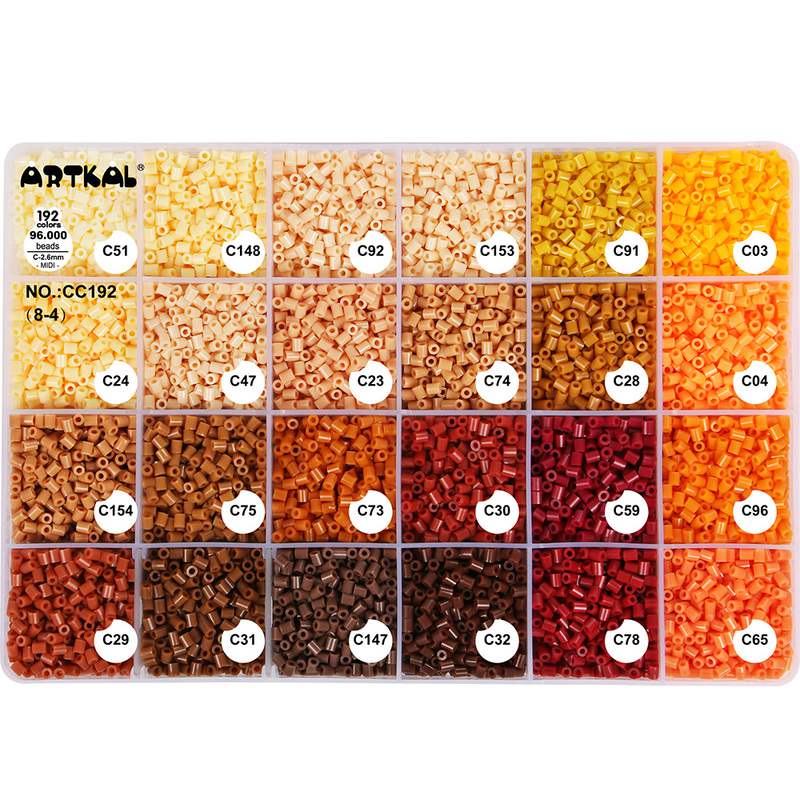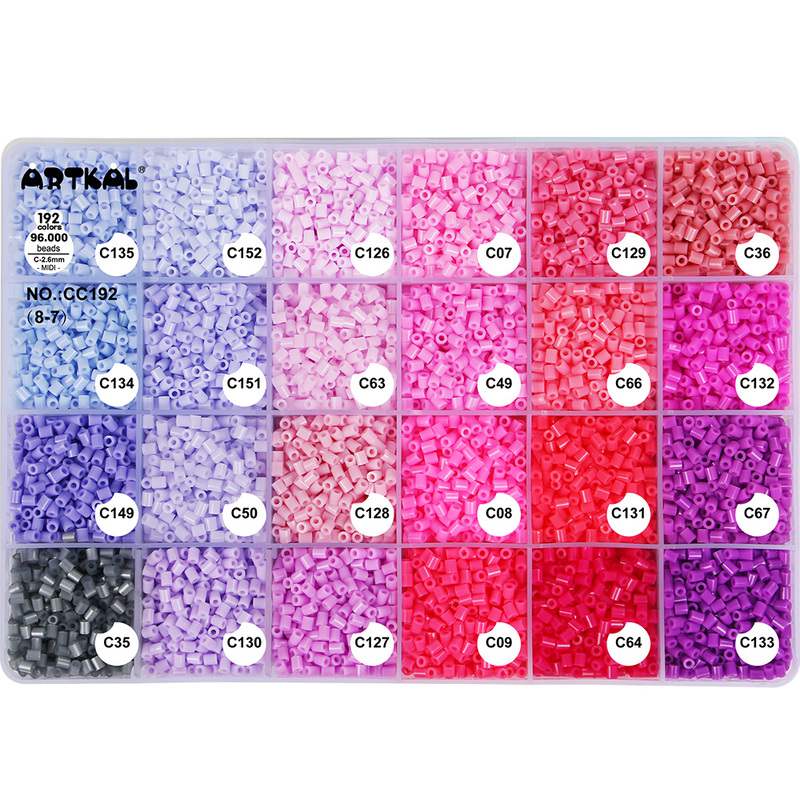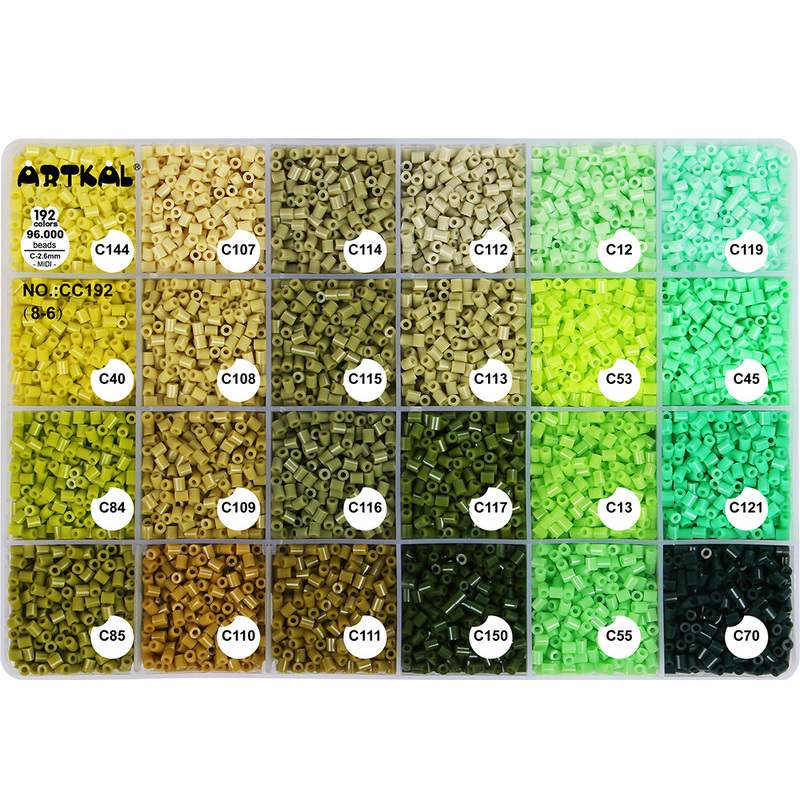2.6mm mini fuse beads are a fantastic tool for creative and educational play. These tiny, colorful beads are perfect for kids ages 6-12, helping them develop fine motor skills, patience, and artistic expression. Whether used for jewelry-making, keychains, or educational projects, 2.6mm fuse beads for kids crafts provide endless fun while promoting learning.
In this article, we’ll explore engaging activities using 2.6mm fuse beads that parents and teachers can introduce to children. From simple patterns to STEM-based projects, these ideas will keep kids entertained while enhancing their creativity and cognitive skills.

Why Choose 2.6mm Mini Fuse Beads for Kids?
Before diving into the activities, let’s understand why 2.6mm beads for kids crafts are ideal:
✅ Improve Fine Motor Skills – The small size helps kids develop hand-eye coordination.
✅ Encourage Creativity – Kids can create endless designs, from animals to geometric shapes.
✅ Teach Patience & Focus – Assembling bead patterns requires concentration.
✅ Safe & Non-Toxic – High-quality 2.6mm mini fuse beads are child-safe when used with supervision.
✅ Affordable & Reusable – Unlike many crafts, fuse beads can be melted and reused.
5 Fun & Educational Activities With 2.6mm Fuse Beads
1. Alphabet & Number Learning Beads
Great for ages 6-8
How to Do It:
Use pegboards to form letters and numbers with 2.6mm fuse beads.
Ask kids to spell words or solve simple math problems by arranging beads.
Once done, lightly iron the beads (with adult help) to create permanent learning tools.
Skills Developed:
✔ Letter & number recognition
✔ Early spelling & math practice
✔ Pattern recognition
2. DIY Friendship Bracelets & Keychains
Great for ages 7-10
How to Do It:
Let kids design small charms or bracelets using 2.6mm beads for kids crafts.
Teach them basic color patterns (e.g., rainbow, stripes, or polka dots).
After arranging the beads, iron them to fuse the design.
Attach a jump ring or string to turn them into wearable art.
Skills Developed:
✔ Color coordination
✔ Handcrafting skills
✔ Gift-making & sharing
3. Symmetry Art & Mandala Designs
Great for ages 8-12
How to Do It:
Print simple symmetry templates (butterflies, snowflakes, or mandalas).
Have kids recreate the designs using 2.6mm mini fuse beads.
Discuss symmetry in nature and geometry while they work.
Skills Developed:
✔ Understanding symmetry
✔ Focus & precision
✔ Artistic expression

4. Mini Fuse Bead Pixel Art (Video Game Characters)
Great for ages 9-12
How to Do It:
Find 8-bit or pixel art templates (e.g., Mario, Pokémon, or Minecraft).
Let kids replicate the designs on a pegboard with 2.6mm fuse beads.
Once complete, iron and frame them as mini artworks.
Skills Developed:
✔ Digital-to-physical creativity
✔ Attention to detail
✔ Patience in following patterns
5. Science & Math Patterns (STEM Activity)
Great for ages 10-12
How to Do It:
Introduce simple coding concepts by creating binary bead bracelets (e.g., blue = 1, red = 0).
Explore geometric shapes by building 3D structures with fused beads.
Use beads to demonstrate fractions or multiplication arrays.
Skills Developed:
✔ Basic coding logic
✔ Math visualization
✔ Engineering thinking

Safety Tips When Using 2.6mm Fuse Beads With Kids
While 2.6mm beads for kids crafts are safe, adult supervision is recommended:
Use tweezers for easier bead placement (prevents frustration).
Iron in a well-ventilated area (adults should handle the ironing step).
Store beads in containers (prevents spills and choking hazards).
Choose non-toxic beads (check for child-safe certifications).
Conclusion:
2.6mm mini fuse beads are more than just a craft supply—they’re a powerful learning tool for kids ages 6-12. From improving fine motor skills to teaching STEM concepts, these tiny beads offer fun, creativity, and education in one activity. Try these projects at home or in the classroom, and watch kids enjoy hours of creative play! Which activity will you try first? Let us know in the comments!

